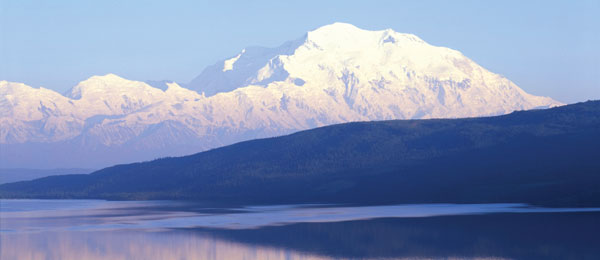How to Ship to Alaska

Finding the Right Partner
Alaska RFP/RFI
Alaska can be a challenging place to move freight. The state’s vast and varied terrain, harsh and unpredictable weather, and distance from the rest of the United States present unique challenges for shippers. Whether the task is transporting consumer goods to cities in southeastern Alaska, supplying the mining industry in central and western Alaska, sending products to major retail chain stores in Anchorage, or servicing northern Alaska’s thriving oil industry, knowing what to expect is half the battle.
Geography: At about 663,000 square miles, Alaska is the largest of all U.S. states. Topographic conditions range from frozen tundra to rocky coastline to volcanoes— all of which can be challenging to traverse.
Infrastructure: Alaska’s highway system is not robust, so many shipments must move via air or sea, and the lack of rail service from the lower 48 states or from Canada to Alaska means railcars must move on barges. Also, some rural areas lack approved runways for commercial airlines, so freight must be flown on turboprop aircraft. Shippers must also consider seasonality. A winter delivery of pipe bound for oil drilling in Prudhoe Bay, for instance, can be sent via truck over temporary ice roads, but that same delivery in the spring must move via air.
Weather: Alaska’s weather is unpredictable and extreme. A shipment that normally takes seven or eight days could extend into a 10- or 12-day trip due to snowstorms, rough seas, avalanches, even road washouts— which can impact both the timeliness and cost of freight delivery. In addition, Alaska’s harsh cold makes temperature-controlled shipping imperative. Temperature-sensitive goods such as some electronics can be damaged if not protected from the weather while in transit.
The extreme winter also means that business booms during milder seasons. Shippers need to be prepared for the crunch in construction, tourism, and commerce to ensure they can find the capacity they need to get goods to Alaska during the warmer months.
Cost: Alaska is far removed from the rest of the United States so shipping costs are understandably higher. Finding alternatives to help reduce costs is key. By building a few extra days into their supply chains, shippers can make the costs more bearable. Instead of stocking Alaskan stores via air or truck transport, for example, a shipper could choose to put goods on a ship or barge from Seattle to Alaska. Mode selection may increase transit time but the savings of these alternative routes can reduce costs substantially.
Though Alaska presents many shipping challenges, they are not insurmountable. Overnight air delivery is available from just about anywhere, and truck service via the Alaska Highway is available from several cities in the United States and Canada to locations in Alaska on the limited highway system. Locations off the highway system, such as Southeast Alaska, have frequent ferry and twice-weekly barge service. Even more remote locations, such as in Western Alaska, may have only seasonal barge service as a surface option.
Finding the Right Partner
The key to successful shipping in Alaska is to partner with a transportation provider that knows how to manage Alaska’s many obstacles. Look for the following capabilities when selecting a provider to move your freight:
- Years of experience transporting goods in Alaska.
- Office locations dispersed across the state, ideally in major points including Prudhoe Bay, the southeast coast ports, and interior cities such as Fairbanks.
- Access to a wide array of modes covering air, ground, and sea transportation options.
Specialized equipment to deal with Alaska’s extreme conditions. - Communications technology such as on-board tracking on trucks and barges.
- An established online program to allow shippers to track and trace shipments electronically.
Alaska RFP/RFI
Choosing logistics companies that offer the best Alaska solutions and services can be difficult. Inbound Logistics can help.
This Alaska Request for Proposal (RFP)/Request for Information (RFI) service can help you find the service providers that can meet your specific Alaska service challenges and needs. The companies below will provide free, no-obligation logistics advice, solutions, and information specific to your logistics management needs.
Ask your Alaska Logistics questions, get answers. Simply complete the information, and detail your Alaska logistics challenges below.
* indicates required fields
*Describe your Alaska Logistics, supply chain or expedited transportation challenge:
"*" indicates required fields
